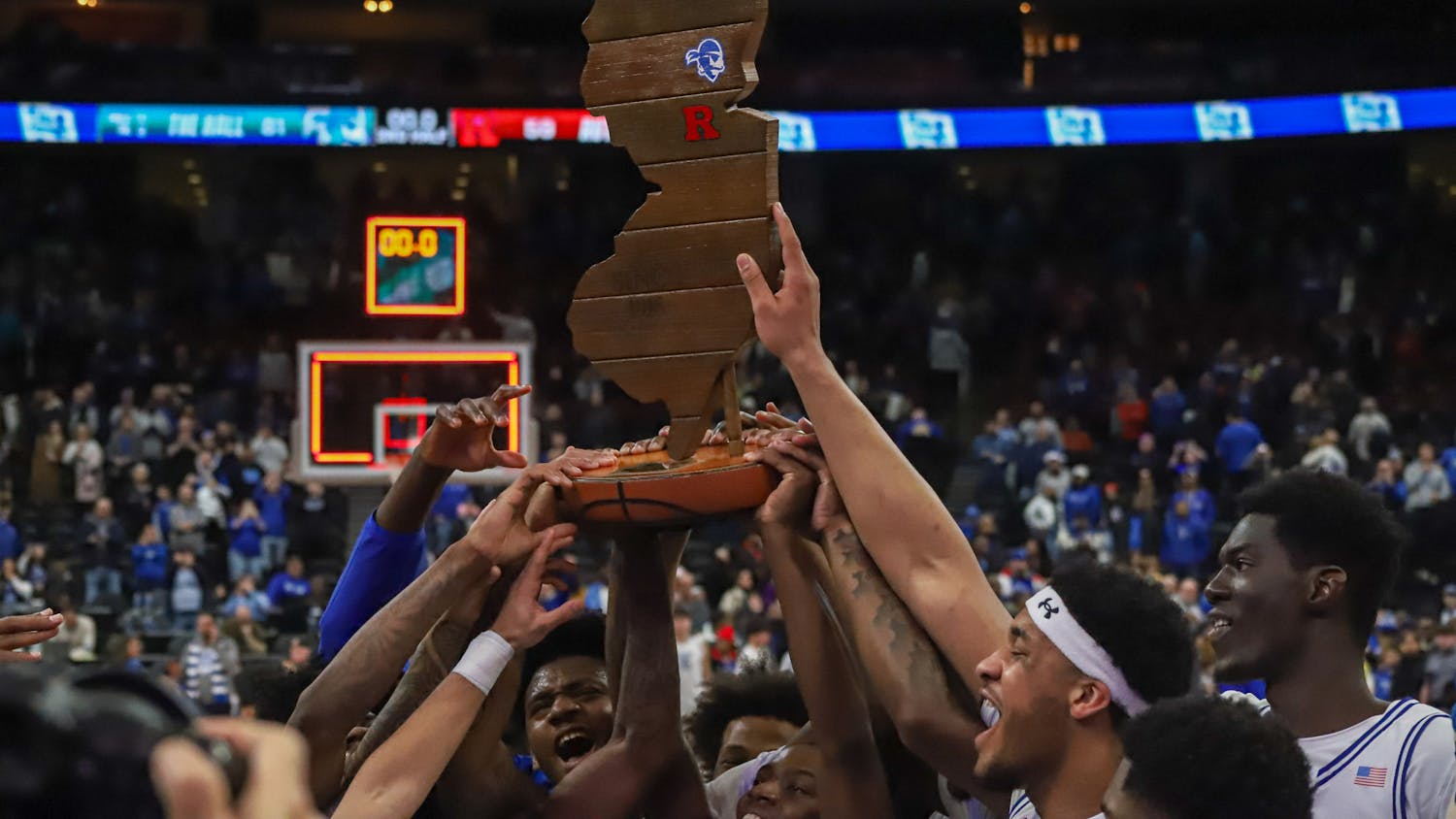The tactical and systematic preparation that goes into styling a team’s game plan often goes unnoticed when a side has players consistently performing at high level. Though the soccer has become a much more fluid sport in terms of where players are positioned on the field, a team’s shape ultimately defines its strengths and weaknesses in terms of personnel.
After their opening three matches of the season, the Seton Hall men’s soccer team looks likely to stick with a variation of the 3-5-2 formation. It has picked up popularity across some of Europe’s elite club sides in recent years and for good reason. The formation provides defensive security through the middle of the field and offensive firepower in the two forwards and two wingers stationed on either side of the field.
There is an instant numeric advantage in midfield as the formation offers three tightly compact center midfielders controlling the match’s tempo. If the Pirates choose to press high up the field, the congestion of bodies centrally will pose a challenge for any opposition to break down on the counter. Likewise, they can also sit in a defensive shell and break their opponents down with counter attacks of their own. Having conceded more than one goal in just three matches last season, the latter option could be the blueprint for the early parts of this year.

Defensive solidarity will not sacrifice creativity, however, as the 3-5-2 opens the door for more players to add their own individual flare to the build-up play. The extra center midfielder allows for the others to move into advanced positions closer to the forwards or expand the field of play by pushing out wide.
At this year’s Under-20 World Cup, Italy built its fourth-place finish on the foundation of this formation, terrorizing opponents with industrious hold-up play from their strikers and intricate passing from deep into the diagonal runs of their wingbacks. Seton Hall, given the time to master this system, could very well become just as versatile and deadly on either side of the ball as the Italians this year.
The formation will inevitably cause a few headaches for the players to overcome. Both wingers will be required to run endlessly on either side of the field as they no longer have coverage from a wide defender. The center backs will position themselves a bit wider to provide better options and passing lanes for their teammates, but any competent wide forward will have a field day if Seton Hall’s wingbacks are not fully committed to their defensive responsibilities.
Counter attacks by the opposition may be a problem for the Pirates if they decide to press high up the pitch. The trouble comes once again from the wide spaces as the wingbacks will likely be pushed up the field, forcing the center backs to stretch themselves out to cover the ground. Holes will open everywhere once the opposition breaks into the middle third, and it will take massive composure and tidy defending if just three defenders are going to plug them.
The ceiling for Seton Hall in this formation is very high, though, as the current squad is filled with players set to remain with the program for the foreseeable future. As the freshmen and sophomores continue to play in the 3-5-2 and adjust to the pace of college ball, the Pirates will get closer and closer to becoming Big East title contenders once again.
Justin Sousa can be reached at justin.sousa@student.shu.edu. Find him on Twitter @JustinSousa99.





